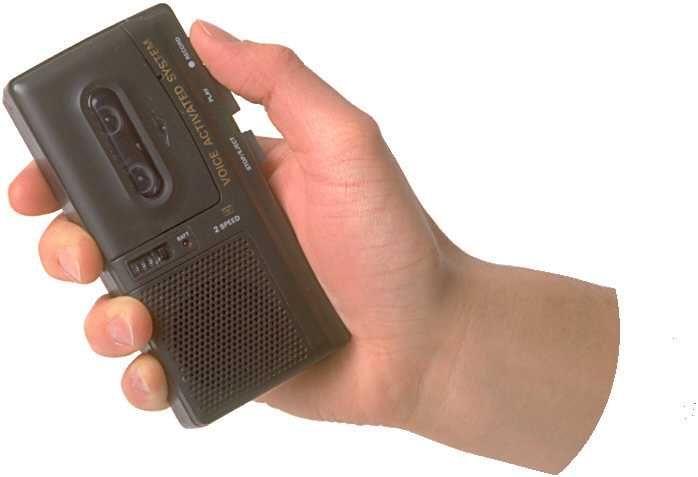Today we will discuss the value of building rapport on the phone. Rapport is that sense of ease and comfort you get with someone when you feel you’re speaking the same language and you’re on the same level. Rapport can give rise to feelings of trust and connection, and there are many methods to help rapport develop. In face-to-face communication, there are many cues which help us build and maintain rapport because we can see the other party, read their body language and observe their reactions and patterns of movement. Building rapport on the phone, however, can be different.
 As investors we spend much of our time dealing with prospects by phone; this can be a very impersonal medium of communication. It adds a significant level of complexity to our effort to establish rapport. When I can’t see you, I am unable to read your non-verbal cues and you won’t be able to read mine either. When talking on the phone, what should you be thinking about to increase your probability of building rapport?
As investors we spend much of our time dealing with prospects by phone; this can be a very impersonal medium of communication. It adds a significant level of complexity to our effort to establish rapport. When I can’t see you, I am unable to read your non-verbal cues and you won’t be able to read mine either. When talking on the phone, what should you be thinking about to increase your probability of building rapport?
First, always remember you have a powerful persuasion tool at your disposal. It’s your voice. Your ability to speak with flexibility, fluency, and control can have amazing results. Now if you’re shy, don’t like talking to people, have a weak vocabulary, and/or a bland, boring or irritating voice, you have a decision to make; become a mime or cultivate some verbal and vocal skills. With the exception of Marcel Marceau, I’m not aware of any wealthy mimes.
Some years ago I was interviewing a candidate for a sales job and I noticed that she spoke more quickly than anyone I’d ever met. I don’t know if she was nervous or if that’s how she spoke normally. I smiled to myself because I knew one thing for sure: this person spends quite a lot of their time frustrated because they’re listening to people who talk way too slow.
 You might be asking yourself, “How did he know that?” People tend to talk at the rate they think, and tend to want others to talk at that rate too. Being a former New Yorker, when I began traveling on business I was amazed to learn that not everyone in the country speaks as fast as we did in the Big Apple. Some of my New York friends can speak so fast, you get tired just listening to them.
You might be asking yourself, “How did he know that?” People tend to talk at the rate they think, and tend to want others to talk at that rate too. Being a former New Yorker, when I began traveling on business I was amazed to learn that not everyone in the country speaks as fast as we did in the Big Apple. Some of my New York friends can speak so fast, you get tired just listening to them.
It was the same with this job candidate, almost no-one could talk at the rate she did, so I knew she would often feel others were talking too slow. So why was I smiling? I knew I could give her a much more enjoyable interview experience than she was used to; I immediately set my voice speed to super-fast and the interview proceeded very well. She got the job and was very successful in the territory she served. A few years later we tried her in the South; she had a very difficult transition until she learned that her voice was a key tool in her ability to be successful.
So how do you develop vocal qualities? Practice, practice, practice! There are five key qualities that you can…and should…develop. They are:
- tonality (movement from low to high pitch and vice versa)
- pitch (how high or low your voice is in general)
- speed (how quickly you speak)
- volume (loud or soft speech)
- timbre (like the difference between a pop singer and an opera singer singing the same note – much different)
The best way I have found to develop vocal qualities and speech patterns is to take them to extremes. Some people are naturally soft spoken and therefore viewed by many as timid. Others are loud and considered overbearing. Those that speak fast are sometimes thought of as con artists, while a slow speaker is thought to be slow minded. None of these assumptions are true; nevertheless, if you put a soft spoken person in a conversation with a loud talker, rapport can be very difficult if the loud person scares the daylights out of the other. I once participated in an exercise where I was supposed to talk as fast as I could while my partner spoke as slowly as they could, the frustration for both of us was incredible.
That was a practice session, but I recall similar feelings of frustration early in my career as the young gun looking for big sales numbers. I got along great with prospects that were fast talkers, but if they were a slow talker, we just couldn’t get in sync. Finally, I got the message. Mirroring speech patterns; such as volume, tonality and speed, can make the other person more comfortable because you are dealing with them in a manner that is familiar to them.
 Dealing with people on the phone is definitely a skill and it is a skill that can be developed. You should tape record yourself speaking normally, at a rate that is comfortable for you. Increase the rate, until you are talking very fast. Then speed it up until you’re speaking way too fast. Then speed it up further until you’re speaking so fast it’s coming out faster than you can think. Then gradually slow it all the way down until you’re speaking way too slow. Take note of your feelings as you’re changing tempo, volume or any of the other qualities you are practicing.
Dealing with people on the phone is definitely a skill and it is a skill that can be developed. You should tape record yourself speaking normally, at a rate that is comfortable for you. Increase the rate, until you are talking very fast. Then speed it up until you’re speaking way too fast. Then speed it up further until you’re speaking so fast it’s coming out faster than you can think. Then gradually slow it all the way down until you’re speaking way too slow. Take note of your feelings as you’re changing tempo, volume or any of the other qualities you are practicing.
By going to the extremes you can develop the flexibility you’ll need to start matching people’s speed. Matching someone’s speaking speed is a quick way to start establishing rapport. Tip for doing this: listen to them. Before long, you will be able to pick up someone’s speed in the first few seconds of a conversation.
Once you’ve mastered vocal speed, practice similar exercises for the following vocal qualities: pitch, tone and volume. Once again, take it to the limits, then go beyond them. As for timbre (voice character); this is a bit more difficult to change, however, it can be done. If you think (or someone has told you) that you have a strange or annoying (some call is ‘distinct’) voice, you can try to modify your timbre by impersonating another voice. At first this will be very strange and unnatural, but eventually it will be easier.
 As with any new skill, you may find these exercises a bit unnatural. Most people are not familiar with talking outside their usual range. With a little practice you will quickly begin to see the benefits as you start to develop more flexibility. In my workshops, I like to create environments where people feel comfortable going outside of their comfort zone, so allow yourself to have that experience with these exercises.
As with any new skill, you may find these exercises a bit unnatural. Most people are not familiar with talking outside their usual range. With a little practice you will quickly begin to see the benefits as you start to develop more flexibility. In my workshops, I like to create environments where people feel comfortable going outside of their comfort zone, so allow yourself to have that experience with these exercises.
Once you have learned to control and vary your vocal characteristics, you are one step closer to mastering the art of rapport building in both face to face and phone interactions. When it comes to the telephone:
- Think about your objective for the call: What do I want to accomplish on this call? How will I know I have achieved it?
- Put yourself in a positive state of mind: This is the best way to put someone else in a positive frame of mind. If you want other people to feel relaxed and at ease, make sure you feel relaxed and at ease. Did a cranky person ever cheer anyone up? (This is easier to do when making scheduled calls, but you can develop and learn skills to do this virtually on command.)
- Establish rapport: some of the best ways to do this on the phone include:
- Talking at the same speed as the other person. This will make for easier listening for your client and not threaten or frustrate them. People like what’s familiar and their rate of speech is something their subconscious will recognize and appreciate.
- Smile when talking on the phone; it projects a positive attitude
- Adjusting your voice tone so that it is similar to theirs – listen to how they speak and sound, match them when and where appropriate.
- Matching your volume and excitement levels as needed. Speak softly and they have to focus more to listen, use volume to express excitement or gain agreement.
- Matching voice pitch so it’s similar to theirs. At the end of a statement, a rising pitch can make you sound weak or confused whereas a downswing will sound confident and assuring. Try it with the tag phrase, “Don’t you agree?” When you end with a downswing it sounds more like a confirming statement. With a rising tone it sounds like you’re not really sure whether they’ll agree or not.
- Visualize: The voice on the other end of the phone is a real person, so create a mental image of that person. Imagine the expression on their face; observe their verbal responses to what you say. And always begin by believing that the call will have a positive result for both parties.
- Show genuine interest: Be curious. Learn their needs and motivation. Some of the most powerful messages you can give to someone are “I am interested in you”, “I care about your well-being” and “You are important to me.” Remember the best outcome is a win/win conclusion. And the quickest way to get these ideas across in your communication is to mean it. When you mean it, you come across as being genuine, and the communication will flow more easily. Another term to describe this is congruent. This means that what you say, feel and believe are all in sync.
Sometimes, we get so caught up in the technology of rapport (matching body language and speech patterns, etc.) that we forget what it’s about: connecting with another human being. The behavioral elements of rapport are just a way to allow that connection to emerge more rapidly.
As a side note: Scripts are a critical tool for communicating but if you can’t build rapport with your prospect, knowing all the scripts in the world won’t help you to be successful. Building rapport remains one of the best methods for building bridges and closing sales, so why not start sharpening your tools today!
